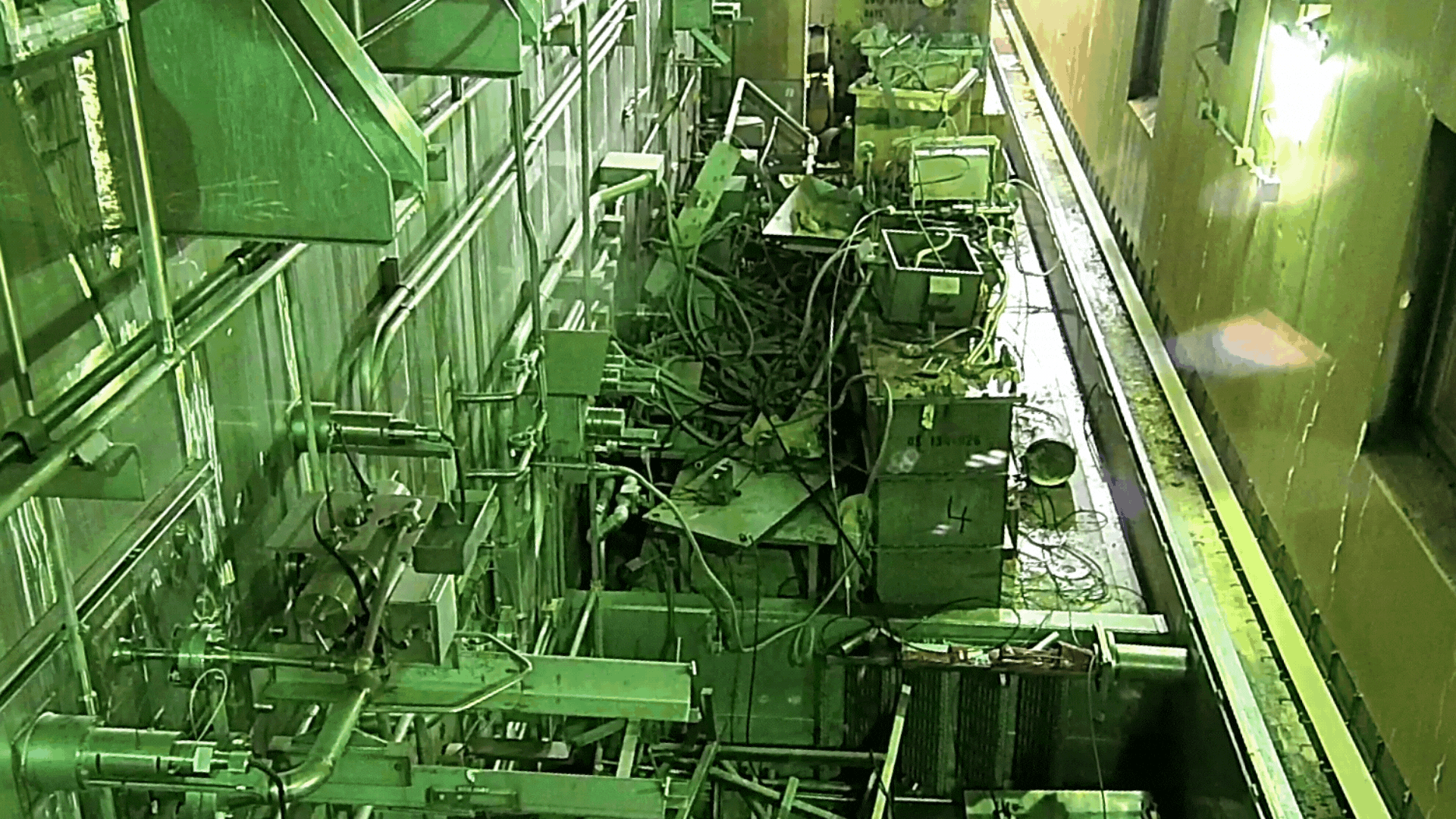A crew recently removed thousands of pounds of legacy radioactive waste from a hot cell, enabling the Idaho Cleanup Project to advance its environmental cleanup and boost efficiency. June 24, 2025.
Office of Environmental Management
June 24, 2025A hot cell at the Idaho Cleanup Project’s New Waste Calcining Facility is shown before and after crews removed more than 27,000 pounds of radioactive material, allowing easier access to crucial valves needed to transfer radioactive liquid waste from underground tanks to the Integrated Waste Treatment Unit.
IDAHO FALLS, Idaho — A crew recently removed thousands of pounds of legacy radioactive waste from a hot cell, enabling the Idaho Cleanup Project to advance its environmental cleanup and boost efficiency by allowing personnel easier access to crucial valves necessary to transfer liquid waste from nearby underground tanks to a treatment facility.
Just as many people have a junk drawer in their kitchens, the hot cell at the Idaho Nuclear Technology and Engineering Center’s New Waste Calcining Facility (NWCF) was used for several decades as a collection point for radioactive equipment, debris and waste boxes.
The problem was the debris restricted access to a pit within the hot cell where several valves are located, representing a mid-point between the underground tanks and the Integrated Waste Treatment Unit (IWTU). That facility is tasked with treating the remaining nearly 567,000 gallons of sodium-bearing liquid waste from the tanks. The liquid is a byproduct of decontamination activities between historic spent nuclear fuel reprocessing runs, a mission that ended in 1992.
NWCF has the necessary infrastructure to transfer liquid waste to IWTU based on its prior role of solidifying the liquid tank waste through a process called calcining. During the NWCF's previous mission and the mission of the first-generation calciner, millions of gallons of waste were converted to a granular solid and transferred to six bin sets, which currently hold 4,400 cubic meters of the material. The hot cell, a heavily shielded concrete room, provided protection from the radioactive material during the legacy operations.
Prior to beginning the hot cell cleanout, crews wrapped exposed pipes with lead blankets to control the radiation and installed “sticky” mats to control the contamination in the hot cell. Personnel donned personal protective equipment and filtered breathing masks.
Eighteen waste boxes ranging in size from 90 to 225 cubic feet were stored in the hot cell for decades. To compare, a large refrigerator is about 20 cubic feet in size. The boxes were filled with cords, power equipment, plastic totes and other debris.
A crane was used to raise the boxes to the top of the hot cell for removal. In total, crews removed almost 27,000 pounds of radioactive debris from the location. The only evidence the material was there in the first place is the clean spaces that remain on the floor.
“I’m extremely proud of the teamwork that was on display during this very challenging ‘house-cleaning’ task,” said Bill Kirby, chief operating officer for U.S. Department of Energy Office of Environmental Management cleanup contractor Idaho Environmental Coalition. “Crews performed flawlessly in an otherwise confined area with unique radiological and physical hazards. We didn’t create the mess, but we responsibly cleaned it up.”
-Contributor: Erik Simpson
To receive the latest news and updates about the Office of Environmental Management, submit your e-mail address.


